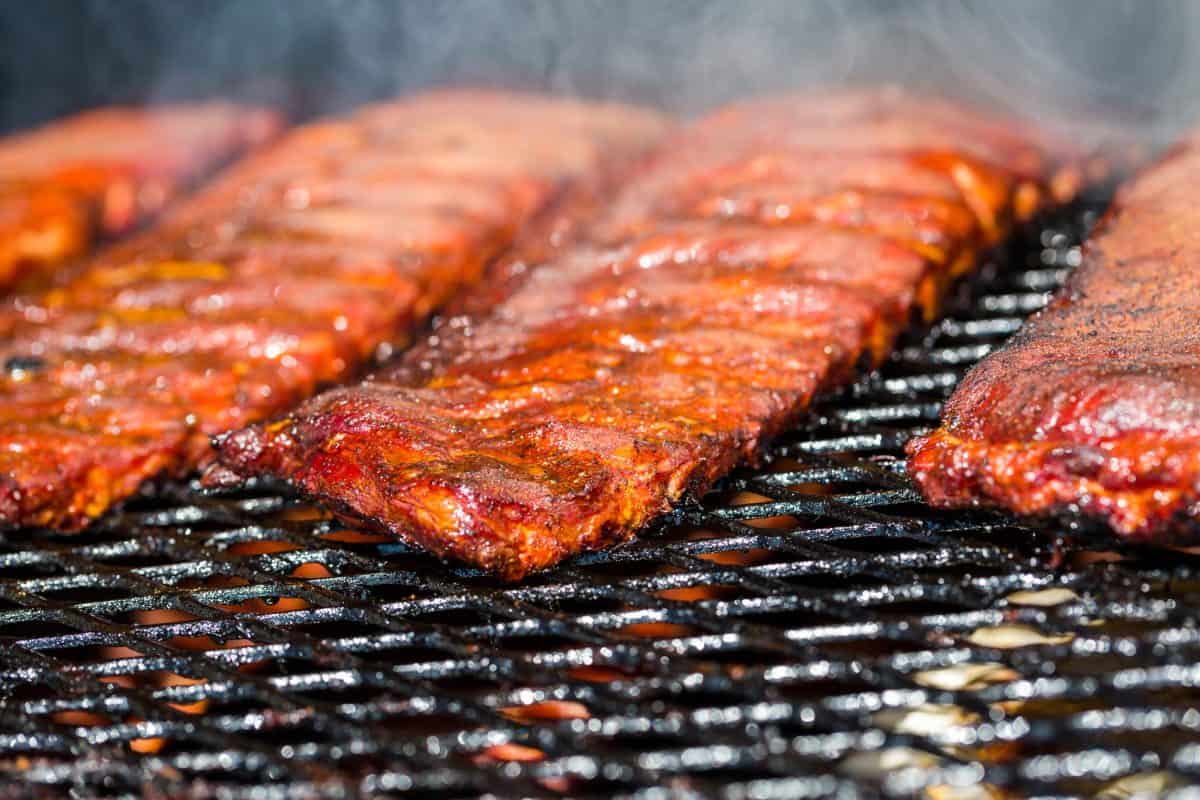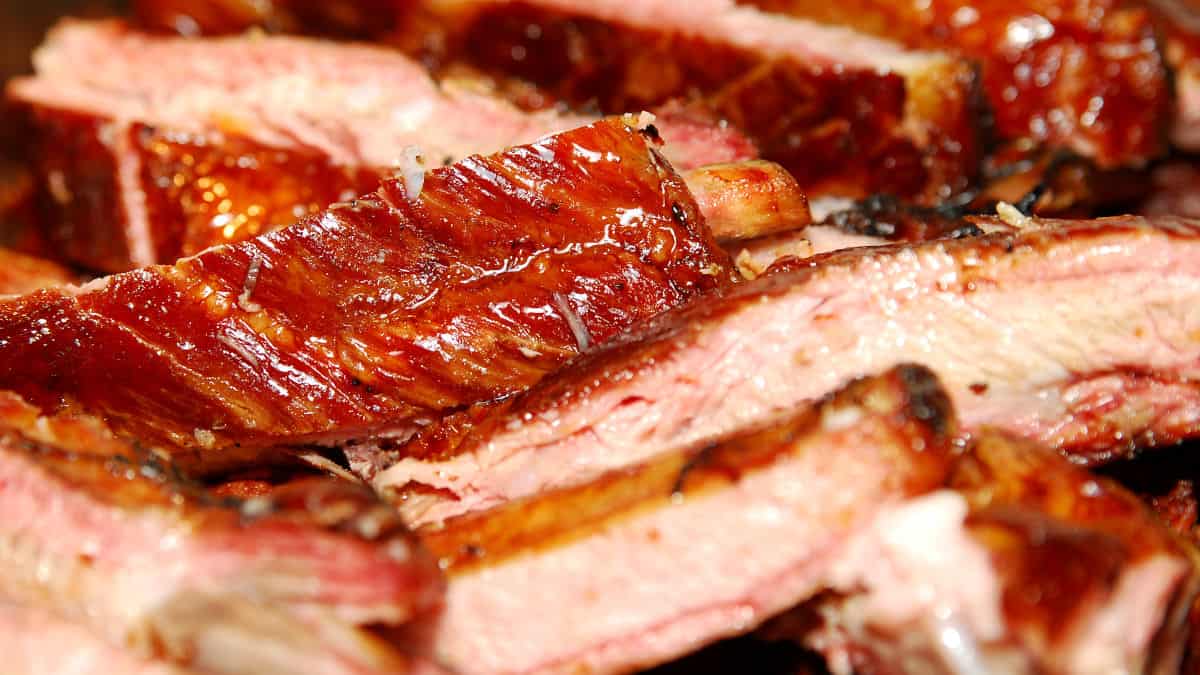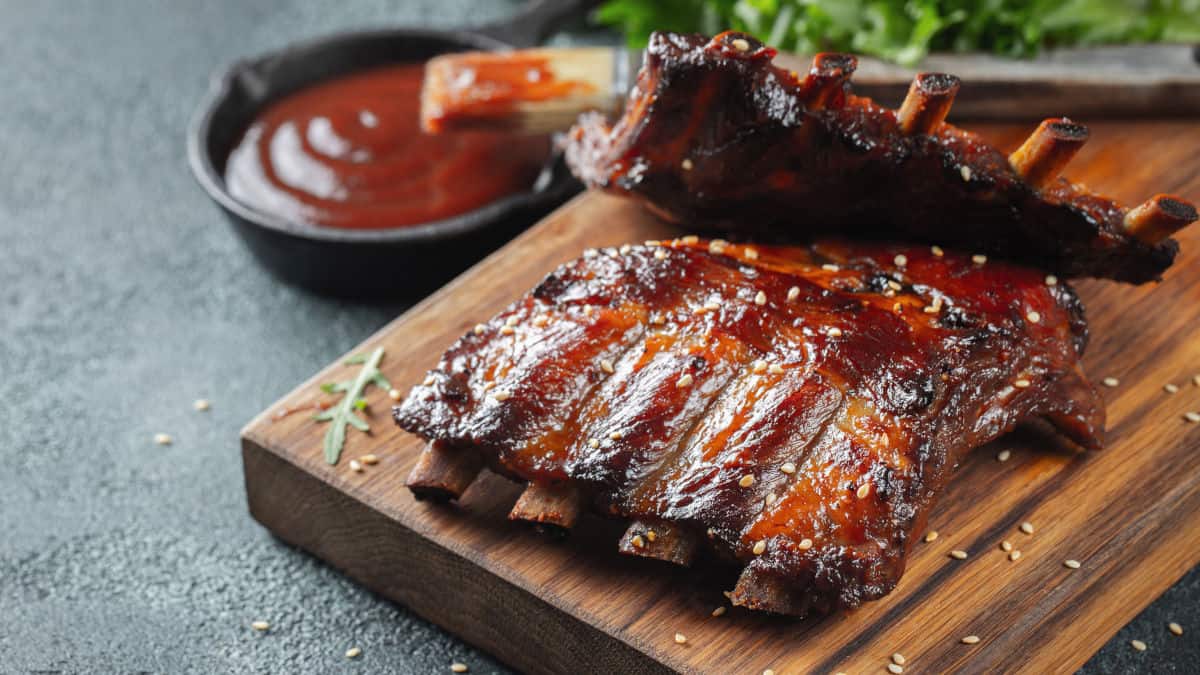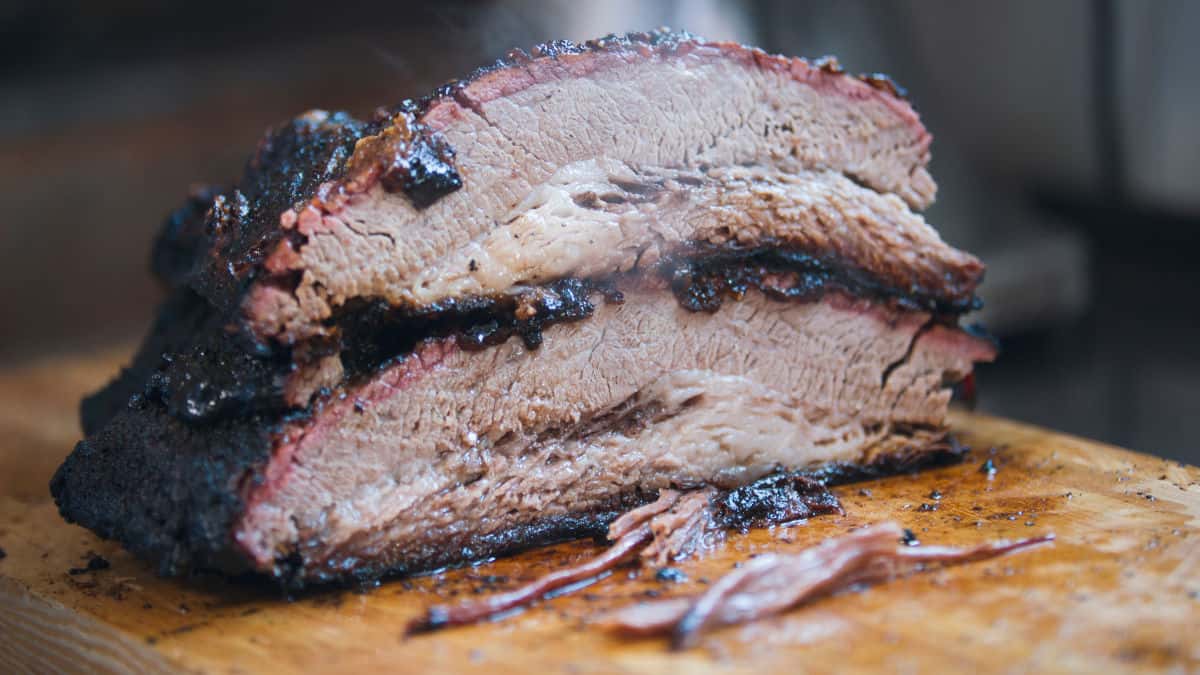Pork ribs are among most BBQ-lovers top 3 favorite barbecue meats, and what’s not to love? Pork ribs are best served coated in sweet BBQ sauce to make them sticky, shiny, and utterly delicious.
Maybe pork ribs are one of your favorite things to eat off the barbecue, but are you aware that there are various types of pork ribs? The different types are best cooked in slightly different ways, and we’re going to cover that today.
We’re also going to look closer at where the different rib cuts are located on the hog and give you a rundown on the basics of the swine.
So, if you’re ready, let’s get the pork on!
Types of Pork Ribs
There are three types of pork ribs:
- Baby back.
- Spare.
- St. Louis style.
Despite there being three types, a pig has only one rib cage, so where do they come from? Depending on the breed, a pig can have between 14 and 16 ribs on each side of the body.
As per the name, you can find baby back ribs at the top where they connect to the spine. Attached to the baby back ribs are the spare ribs that go all the way down to the rib tip — where the bacon is. St. Louis ribs are spare ribs but without the tip.
Let’s take a closer look:
Baby Back Ribs
Baby backs are located at the highest part of the pig’s rib cage, connected to the spine.
Now, don’t think that because they’re called “baby” that they come from piglets — baby back ribs are called baby because of the smaller size compared to the other rib types. They’re also commonly known as back ribs or loin.
There’s less fat up around the backbone, making the baby backs’ meat whiter, leaner, and more tender than the other types.
A rack of baby back ribs will narrow from one end to another, usually measuring 6 inches on the long end and 3 inches on the other. The bones naturally bend at the top where they meet the spine.
Spare Ribs
Spare ribs are probably one of the most popular types of pork ribs. The cut starts where the baby back ribs stopped and continued down where they meet the breastbone.
The top of the spare ribs is bone and marrow, leftover from where the baby backs were separated from the cut. Because the spares are further down on the pig’s side, the racks are straighter than the baby backs.
St. Louis Style Ribs
St. Louis style ribs are known to be a cooking method, but what many fail to understand is that it’s actually a cut. Basically, St. Louis ribs are the spare ribs, minus the tips.
Meatpackers in St. Louis, Missouri, would prepare the spares in this way (without the tips) in the mid-20th century, hence the name St. Louis style ribs.
This cut is very straight as it only includes the middle part of the ribs — there’s no cartilage or small bones. St. Louis ribs are a nice in-between in size as they are shorter than spare ribs but longer than baby backs.
Most competitive pitmasters and grillers prefer to use St. Louis style ribs simply because they look better. However, the cut isn’t as commonly used in backyards, mostly because it’s harder to get your hands on St. Louis ribs in particular — most supermarkets sell whole spare ribs that you have to cut.
Rib Tips
Rib tips are found down close to the belly of the pig. Because of this, the meat generally has a lot of marbling and fat, which makes sense, considering it’s so close to the bacon. But, along with the marbling and fat, there’s also a significant amount of cartilage and small bones, making rib tips challenging to eat.
Rib tips are the trimmed part from the St. Louis cut. They’re usually between 8 to 12 inches long and only 1 to 3 inches wide. Rib tips are often served as 2-inch chunks and a knife, the diner will then have to gnaw their way around the cartilage and small bones.
Country Style Ribs
Country-style ribs aren’t actually ribs to be completely honest; they’re more like a bone-in pork chop sourced from the front of the baby backs, close to the shoulder.
Country-style ribs can be served with one or two bone thicknesses and a lot of loin meat, depending on the pig’s size and how it’s butchered.
One of our favorite ways to cook country-style ribs is to brine them overnight in a sugar/salt/water solution, then cook it reverse-sear-style for out-of-this-world pork chops.
How to Cook Pork Ribs

Unlike beef ribs, pork ribs are virtually all cooked the same way — apart from country-style ribs. Here’s a quick guide:
Step #1. Trim
Start by trimming any loose meat or fat that’s hanging off the ribs. Loose fat or meat will cook quicker and eventually burn before the ribs have a chance to finish.
Turn the ribs over and remove the peritoneum — a membrane located at the back of the ribs. The peritoneum won’t render away when cooking and is not pleasant to chew on.
You can easily do this using a butter knife or other dull tool — the reason why you don’t want to use a sharp object is not to rip the membrane or pierce the meat. Work your way under the layer and loosen it. When it’s loose, use your fingers and a paper towel to rip the membrane off.
If you’re cooking rib tips or country-style, there’s usually no membrane to remove, so just jump to the next step.
Step #2. Prepare
Once the rack is trimmed, season it with a sweet rub — be generous and give it a heavy coat on each side. A good rub can include a mixture of brown sugar, paprika, chili powder, cayenne powder, garlic powder and more. Some cooks like to add a bit cinnamon for a little kick of flavor.
Step #3. Cook Indirect, Low And Slow
Set your grill up by creating two grilling zones, one for direct cooking and indirect cooking. You can add a few aromatic wood chips or chunks for added smoke flavor.
Unlike other meat cuts, ribs aren’t cooked to a specific temperature or doneness, what you want to aim for is meat so tender that it pulls off the bone easily.
If you’re cooking at the usual 225 to 250 degrees Fahrenheit, St. Louis and spare ribs will need about five to six hours — baby back ribs will need around three to four hours.
Option: Texas Crutch
The Texas crutch technique is often used by competitive barbecuers when cooking ribs, brisket or pork butt.
All you do is smoke your ribs as usual for three hours, then remove it from the smoker, wrap it in foil with an added liquid, then smoke it for another two hours. When the two hours are up, you remove the ribs from the foil and place them on the grill for another hour to “tighten up” and get a nice crust going.
Once done, sauce and serve.
This step is entirely optional, but it’s an effective way to speed up the cooking time and make the ribs more tender. However, a downside to this way is that you risk losing the bark.
The bark is achieved by basically dehydrating the outside of the meat, crisping it up; however, as you’re wrapping it in foil and adding a liquid, it will create a moist and humid environment — great for tenderizing, not so good for the bark.
We recommend that you unpack it an hour or more before it’s finished to allow it to crisp up just a bit.
With the added liquid inside the foil, you’re essentially braising the ribs, similar to how you would braise beef in a roasting pan with broth.
You can add any type of liquid that you prefer — apple juice is very popular with pork as it complements the meat’s flavor well. You can also add broth, wine, beer or even water.
Step #4. Sauce And Serve
Saucing your ribs before serving is another optional step, but it’s certainly worth the extra effort as you get added flavor and caramelization. In saying that, many pro-pitmasters don’t sauce the ribs before serving.
However, if you do want to sauce your ribs, do so when they still have a remaining 15 to 20 minutes on the grill. BBQ sauce contains quite a lot of sugar, meaning it will burn if left on a hot grill.
Apply one or two tablespoons of sauce to each rack, then close the lid and allow the sauce to set and become tacky.
You can serve the ribs as a whole or half rack. You can also cut them into individual bones.
Final Words
We hope you enjoyed and learned something from this quick rib run-through. As you can see, although there are different types of pork ribs, they’re all cooked virtually the same way.
How do you cook pork ribs? Do you have a favorite (or secret) sauce or rub you’d like to share with us? Do share in the comments below.




